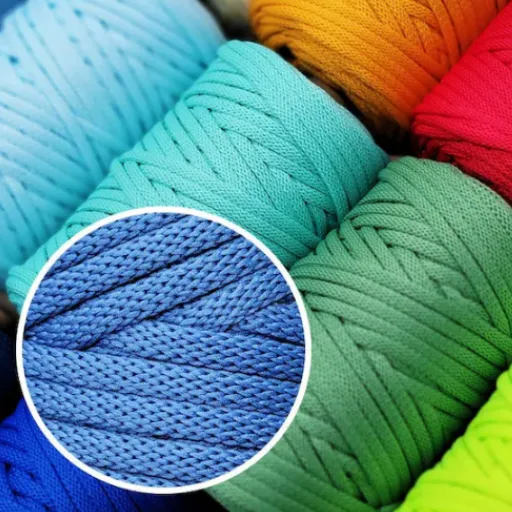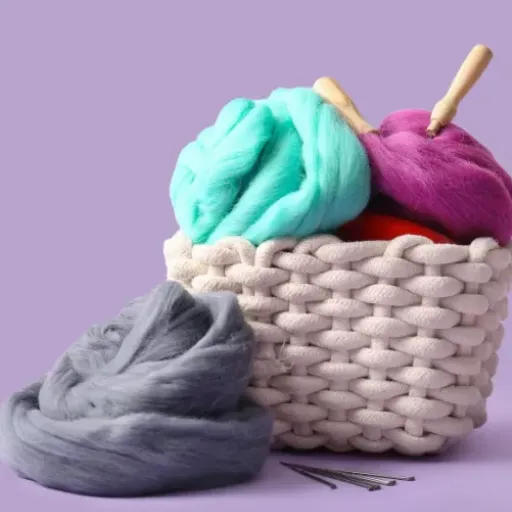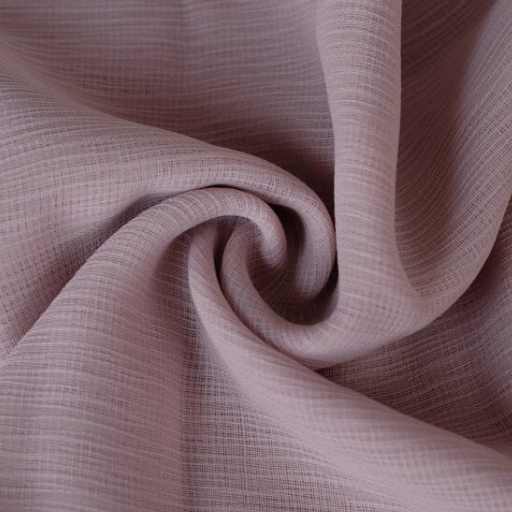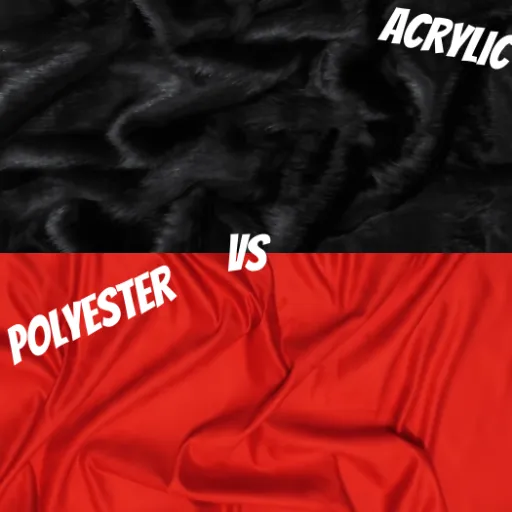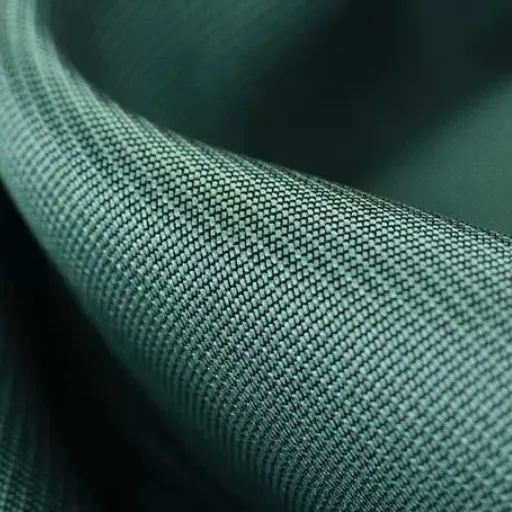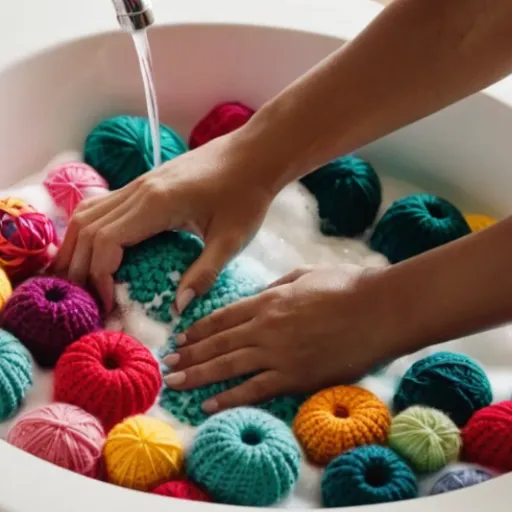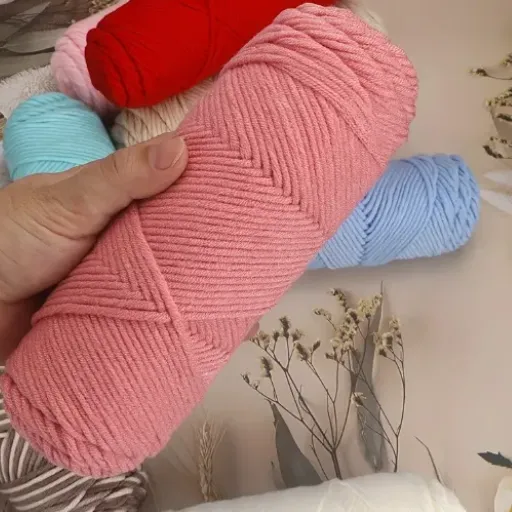Blended yarns represent a technological marvel of textile science, combining various fibers to create materials that bring out the best in each. Fiber blends offer a range of alchemy to designers and manufacturers, imbuing durability, comfort, or designer aesthetics that stretch the frontiers of fabric possibilities. In this article, the art and science of blended yarns will be explored, including their production, applications, and the benefits they bring to fashion and function. If you’ve ever wondered how your favorite apparel achieves its perfect harmony of performance and style, this is the place to be.
What is Blended Yarn?
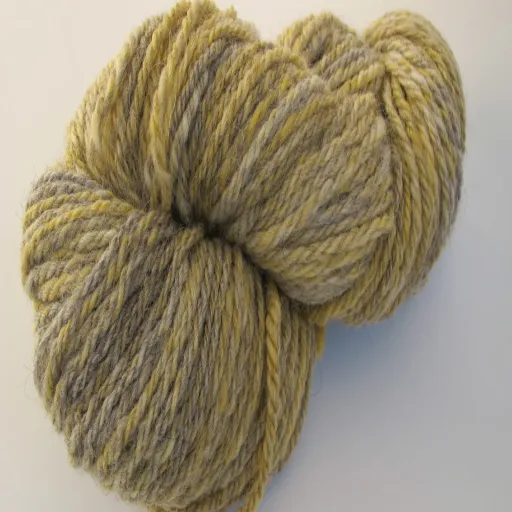
When two or more fiber types are combined into a single yarn, the resulting material is a blended yarn. This process is undertaken to leverage the unique properties of each fiber while providing the fabric with the desired balance of strength, dirt resistance, softness, and durability. Common examples include blending natural fibers, such as cotton or wool, with synthetic fibers, like polyester or nylon. Such combining enables greater versatility and rendition of the fabric, and thus can find application in both fashion and functional textiles.
Reasons for Blending Fibers
Fiber blending is the process of combining fibers to enhance the quality and functionality of textiles, thereby meeting the diverse demands of various markets. A primary consideration is the need to balance the properties of multiple fibers effectively. For instance, blending cotton and polyester produces breathable fabrics that resist wrinkles and shrinkage, thereby addressing the common issues of comfort and maintenance.
In addition to performance improvement, the blending of fibers often has economic advantages. If wool or silk is expensive, it is cheaper to blend them with acrylic or rayon because the price per unit is lowered. Thereby, a costly fabric is within reach of more consumers. Another set of performance concerns relates to the use of blended materials for clothing such as activewear, outdoor gear, or home furnishing.
Environmental sustainability is another important factor in fiber blending. By utilizing recycled and natural fibers within blends, manufacturers reduce waste while incorporating an environmentally friendly aspect into their production processes, thereby acting as a more sustainable alternative to pure synthetic materials. It is this versatility and adaptability from the fiber blending that make it an essential technique in contemporary textile manufacturing.
Growing Popularity in Various Industries
The beauty of that adaptation lies in its ability to meet the diverse needs of consumers and fulfill environmental objectives. The fashion industry utilizes fiber blends to create more durable garments that strike a balance between comfort and ecological consciousness, particularly for socially conscious clients of today. On the other hand, home textiles, such as upholstery, linens, and carpets, also adapt fiber blending to increase product durability and functionality. The automotive and construction sectors are even considering fiber blends for stronger, lighter materials, which signifies their versatility. According to recent data trends, consumer interest in sustainable and innovative textiles continues to rise, in tandem with a steady increase in searches for “sustainable fabrics” and “eco-friendly textiles,” indicating a shift in the market towards greener solutions.
Benefits of Blended Yarn Over Traditional Yarns
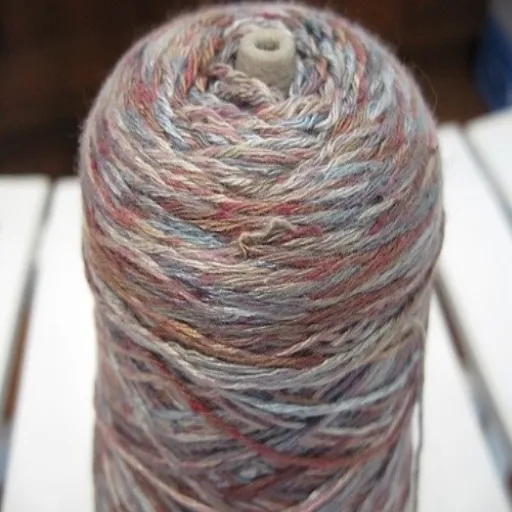
Several benefits come with mixed yarns as compared to traditional yarns, offering significant preference in many industries:
- ✓
Enhanced Durability: Due to the combination of fibers with complementary strengths, the yarns manufactured through blending remain resilient and long-lasting compared to conventional yarns made up of just one fiber. - ✓
Improved Comfort: Blending provides an ideal mix where the fabric can be soft and breathable, or stretch as needed. - ✓
Cost Efficiency: By blending fibers, one can reduce costs without compromising quality, making blended yarns a more cost-effective option. - ✓
Versatility: Blended yarns cater to a multitude of special applications, producing unique textures, finishes, and properties depending on the fiber combination. - ✓
Sustainability: Fiber blends, especially those incorporating recycled or environmentally friendly materials, offer an attractive proposition for textiles focused on sustainability.
Enhanced Properties of Fiber Blends
Fiber blends exhibit numerous enhanced properties, making them highly attractive in various fields. When fibers combine, they bestow that complementary functionality on one another. For instance, blends of natural fibers, such as cotton, and synthetic fibers, like polyester, offer durability, wrinkle resistance, and moisture management. Likewise, a wool-acrylic blend means warmth, soft texture, and resistance to shrinking. These combinations, therefore, outperform and cater indeed to the specialization of certain products, ranging from apparel fabrics to industrial fabrics, reflecting their flexibility and effectiveness.
Cost Efficiency of Blended Yarns
Blended yarns derive cost efficiencies by combining raw ingredients or materials to lessen production expenses while maintaining quality. For a simple illustration, the addition of cheaper synthetic fibers as a partial substitute for high-cost natural ones enables a manufacturer to control costs without affecting the ultimate functioning or durability of the goods. Blend yarns also need less care and are more durable, thus saving both the consumers’ and the industry’s money in the long run. This option blends yarns for various economic applications, ranging from fashion to industry, offering a cost-effective balance between price and performance.
Specific Blend Types and Their Applications
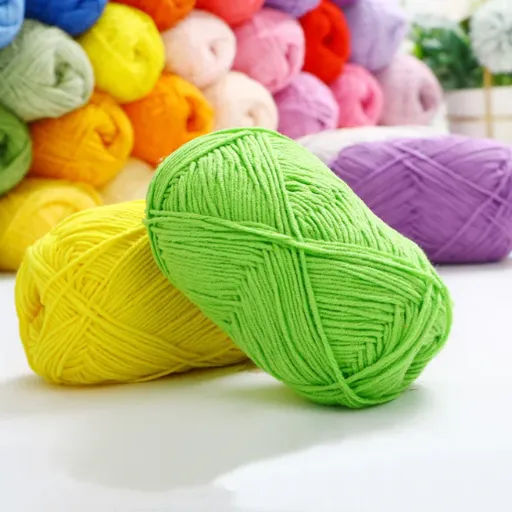
| Blend Type | Key Properties | Common Applications |
|---|---|---|
| Polyester-Cotton Blend | Strength, wrinkle resistance, softness, breathability | Shirts, dresses, uniforms – comfortable apparel with easy maintenance |
| Wool-Synthetic Blend | Warmth, durability, natural insulation | Coats, sweaters, scarves – winter garments with longevity |
| Cotton-Lycra Blend | Comfort, stretch, flexibility, elasticity | Activewear, leggings, tight-fitting clothes |
| Silk-Viscose Blend | Softness, lightweight, shiny, luxury with affordability | Scarves, evening dresses, curtains |
| Linen-Cotton Blend | Strength, reduced wrinkling, breathability | Summer clothing, table linens, casual home décor |
Cotton-Polyester Blend Uses
Perhaps one of the most versatile and hardy fabric combinations that have withstood Mother Nature’s scrutiny and advanced into further commercial applications is cotton-polyester. It balances the inherent softness and breathability of cotton with the resilience and wrinkle resistance of polyester. Typically, it is worn casually in everyday wear, such as t-shirts, polos, or casual attire; the blend is prized for its easy comfort and care. Other uses include activewear, featuring good moisture-wicking properties while maintaining its shape and durability. Due to a mix of practicality and elegance, this cotton-polyester blend is the perfect choice for home textiles, including bed sheets, curtains, and upholstery.
Wool-Nylon Blend Benefits
The wool-nylon blend combines the natural warmth, softness, and breathability of wool with the strength and durability of nylon. Depending on the ratio, this combination can be powerful and wear-resistant while adapting well to various climates. It is in high demand for outdoor and cold-weather activities apparel, such as coats, socks, and thermals, which help retain heat for the wearer while simultaneously pulling moisture away from their body. Nylon imparts shrink resistance and longevity to garments, allowing them to maintain their shape and function through frequent use. This fabric stock is really an outstanding balance of comfort and features for all combinations of everyday and performance wear.
Tips for Choosing the Right Blended Yarn
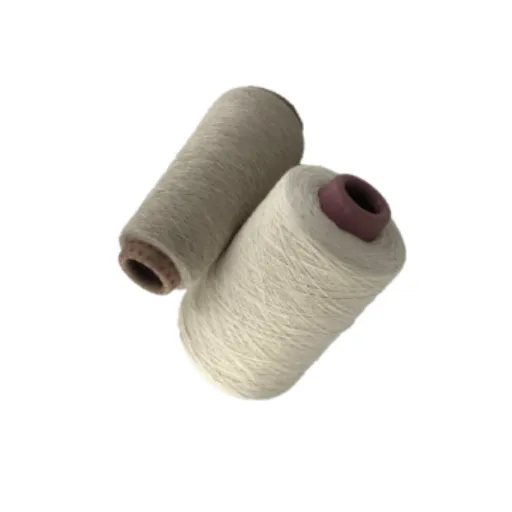
- Consider the Purpose – Determine what the yarn will be used for. For warmth and moisture-wicking, choose blends like wool and nylon. For softness and breathability, cotton blends work well.
- Check Durability – If the project requires frequent use or washing, select a blend that includes synthetic fibers such as polyester or nylon for enhanced strength and longevity.
- Evaluate Comfort – For garments worn close to the skin, prioritize blended yarns that incorporate natural fibers, such as cotton, bamboo, or silk, for enhanced softness and comfort.
- Assess Ease of Care – If you need low-maintenance materials, look for machine-washable yarn blends designed for convenience.
- Match Fiber Properties – Ensure the fibers in the blend complement each other, balancing features like elasticity, texture, or weather resistance, depending on your project.
Matching Yarn to Project Type
Choosing a yarn that is incompatible with a project may compromise the outcome. The following are the most common criteria applying to yarn selection according to recent search trends and interests:
- For wearable garments
Projects like sweaters or scarves often require soft, breathable blends, such as merino wool, alpaca, or cotton. These fibers ensure comfort and durability, meeting both aesthetic and practical demands. - For home decor items
Blankets, pillows, and other décor pieces benefit from sturdy, easy-care yarns like acrylic or cotton blends, which provide high durability and are machine washable for added convenience. - For Baby and child items
Softness and hypoallergenic properties are vital. Blends featuring bamboo, cotton, or nylon are trending for their gentleness on sensitive skin. - For Accessories like Bags or baskets
Heavier, structured yarns such as jute, t-shirt yarn, or bulky-weight yarns are ideal due to their durability and ability to hold their shape.
Considering Fiber Properties
Considering fiber properties, I examine texture, elasticity, strength, and how the material will perform for my specific purpose. For instance, I use softer fibers for wearables and more durable ones for home décor, ensuring they are fit for both function and comfort.
Current Trends and Innovations in Blended Yarn Production
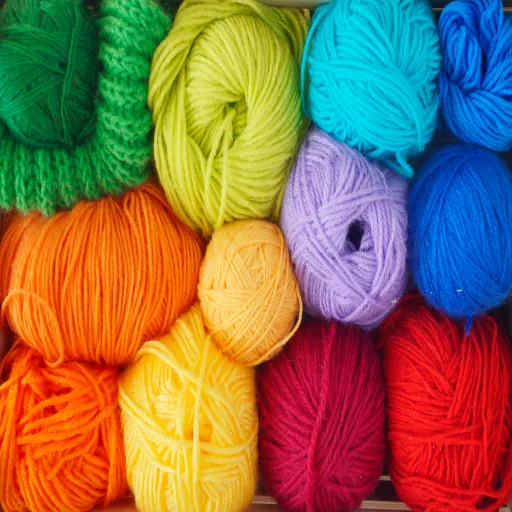
It is no longer news that several sustainable practices have been incorporated into the delicate art of blended yarn synthesis. There has been an increase in the adoption of eco-friendly behaviors among yarn blend manufacturers, who are introducing recycled fibers and organic materials, as well as other sustainable practices. All the materials used are appropriately adapted to the latest spinning technology, which helps reduce variation and imbalance in both the natural state and the force and strength of the blends. There is also a constant rise in demand for yarn blends that are adaptable to their users’ preferences, allowing for the creation of different yarn varieties for various lengths, such as denser or moisture-controlling options. For example, it is possible to include ‘smart’ yarns that, for instance, help maintain certain levels of temperature or are germicidal, within objects of utility that have been traditionally developed only out of yarns. These improvements signify the industry’s commitment to diversity, environmental sustainability, and performance enhancement.
Sustainability Practices in Yarn Production
The awareness of the importance of sustainability in yarn manufacture has become a key focus for players in the textile industry, particularly in the last few years. One of the significant steps taken by many textile producers is the incorporation of organic fibers and recycled materials in place of virgin fibers, thus lowering the adverse environmental impact of yarns. Some have turned to creative, unconventional methods of dyeing, such as waterless dyeing, as well as energy-saving spinning processes. There is also an essential concern about the way raw materials are obtained, particularly regarding labor laws and environmental impact, as well as the adoption of responsible practices. These actions entail remedial approaches to ecological threats, but also respond to the growing consumer demand for eco-labeled or eco-friendly products.
Technological Advancements in the Blending Process
The enhancements of yarn-blending processes have revolutionized the textile industry, as the techniques used have become more accurate, efficient, and sustainable. Contemporary technologies, particularly AI and automated blending machinery, can blend different types of fibers in the appropriate proportions to maintain uniformity. These technological advances enable the improved execution of the blending process, resulting in reduced material wastage. Furthermore, some systems based on artificial intelligence are designed to determine the characteristics of various types of fibers and forecast how well they will meet the requirements for fabrics on the market. This advancement in technology enables the production of high-quality products while simultaneously meeting the industry’s objectives of environmental friendliness, cost reduction, and reduced pollution.
Reference Sources
There are five academic and authoritative sources related to “blended yarn” that you can use to check the correctness of your article.
Enhancing Yarn Strength Through Fiber Blending: A Study
Source: ResearchGate
This study examines the effect of fiber blending on yarn performance, specifically focusing on the changes in yarn strength resulting from variations in the physical characteristics of the fibers.
Study on the Relationship Between Blending Uniformity and Yarn Performance
Source: SAGE Journals
This paper examines the relationship between yarn uniformity and yarn performance, providing a theoretical foundation for future research.
Analysis of Blended Yarn Strength
Source: Middle East Journal of Applied Sciences
A comparison between theoretical and actual yarn strength predictions in cotton/polyester blends, with actual verification.
Fiber Types | Textiles
Source: University of Georgia Extension
An educational resource explaining blended fabrics, their composition, and how fibers are combined before spinning into yarn.
Influence of Blending Method and Blending Ratio on Ring-Spun Yarn
Source: Northwestern University Library
This study examines the impact of blending methods and ratios on yarn quality, with a focus on variations in mass and imperfections.
Frequently Asked Questions (FAQs)
What is blended yarn?
Blended yarn is a type of yarn made from two or more different types of fibers, such as a wool blend or a cotton blend. These fibers are blended to create unique yarns that combine the properties of each material, offering a range of benefits for various crafting projects.
What are the common types of fiber blends used in yarn?
Standard blends include mixtures of wool and acrylic, cotton and polyester fibers, and cashmere with other fibers. Each blend offers distinct characteristics, such as warmth and elasticity, or softness and absorbency, making them suitable for various applications in knitwear and crochet.
How does the blending process affect the quality of yarn?
The blending process has a significant impact on the durability and comfort of the yarn. By mixing two or more different fibers, manufacturers can create yarn that is less prone to wear and tear, more resistant to pilling, and has improved absorbency, enhancing the overall quality of the finished products.
What are the advantages of using blended yarn for crafting?
Using blended yarn offers numerous advantages, including a soft feel, warmth, and elasticity. Blended fabrics are often more versatile and can be used for a wide range of projects, from everyday items like dishcloths to luxurious knitwear.
How should I care for my blended yarn projects?
Care instructions for blended yarn projects vary depending on the specific fibers used in the blend. Generally, it’s best to follow special care guidelines, such as gentle washing and avoiding high heat, to maintain the yarn’s quality and prevent damage over time.
Can I use blended yarn for crochet projects?
Yes, blended yarn is widely used in crochet projects due to its versatility and the unique texture it provides. Crafters often choose a blend that combines different fibers to achieve the desired softness, durability, and aesthetic for their crocheted items.
What should I consider when choosing a blend for my project?
When selecting a blend, consider the characteristics you need for your project, such as warmth and softness, durability and comfort, or absorbency. Different blends cater to various needs, so understanding the properties of the fibers involved will help you choose the right yarn for your crafting endeavors.
Are there any disadvantages to using blended yarn?
While blended yarns offer numerous benefits, they can sometimes be more challenging to care for and may require special attention to prevent issues such as pilling. Additionally, not all blends are created equal, so it’s essential to choose high-quality yarns to ensure you’re getting the best performance for your projects.









